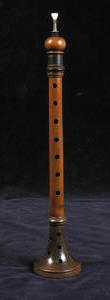The History of the Tárogató
The history of the tárogató can be followed very well from the targeted publications and studies. There is no vast difference among them, only perhaps based on the emotional ties of the writer to the instrument. You will find the essay of a musical historian different from that of an engineer or a musician playing the tárogató. The history of the tárogató can be best understood in the light of the historical events and circumstances.
There are two different types of the tárogató shawm:
a. Historical Tárogató
b. Reformed Tárogató
The Historical Tárogató
( Picture of the historical tárogató )
This instrument is known by two names, it is referred
to as the Turkish pipe or the tárogató shawm. Both names indicate an
instrument belonging to the same family.
Its history dates back to ancient times. Reference to some pipers as early
as the period a millennium ago in the history of the Hungarians can be
found, however, there is no clear evidence how much those pipes can be
related to the tárogató shawms we call by that name. ’Piper’ as a family
name was also known in the chronicles.
The first written records are found in the 15th – 16th century, where the
expressions ’pipers’ and ’ shawm’ can often be seen in the documents. One
thing is clear, that during the Turkish occupation of Hungary (1526 –
1686) the Turkish pipe is a military instrument. Its shrill, piercing
voice made it ideal for the purpose, otherwise it was used in the everyday
life. Corresponding descriptions disclose that it was popular among
Hungarians at that time. The wedding ceremony of György Rákóczi II and
Zsófia Báthory was accompanied by Polish and Turkish pipers at the
reception of the bride. Peter Apor reported that the nuptial procession
consisted of the ’pipers, trumpetiers and drummers, followed by wedding
guests’.
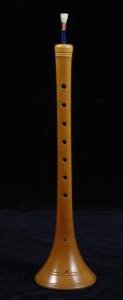
|
300 years ago a most outstanding event in the Hungarian struggle for independence and freedom took place under the leadership of Ferenc Rákóczi II. (1703 – 1711). This was peculiarly accompanied by the tárogató shawm. During battles it was used as an aid giving the various signals on the field, whereas the ’kuruc’ people (soldiers) used it for entertainment in the war-camps to accompany singing and dancing. Pictures: ’kuruc’ rider playing the tárogató shawm, sword-dance and a
tárogató shawm player. |
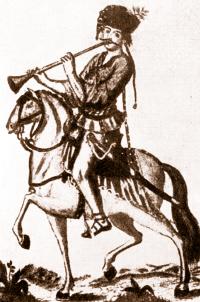 |
The Reformed Tárogató
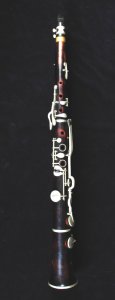
( Pictures: a tárogató by Schunda and one by Stowasser )
Vencel József Schunda and János Stowasser handed in their patent descriptions as
for the renewal of the tárogató shawm to the National Patent Office nearly in
parallel. The attempts used the original, ancient form as a basis for the
process. The makers found it essential to lengthen the corpus of the instrument
as a start, and in the interest to achieve an easier play, a few keys were
installed. The original tárogató shawms were double reed instruments, and it was
only at a later stage when they decided to implement the single reed
clarinet-like mouthpiece to it. However, these changes brought along the change
in the tone of the voice of the tárogató. The sounding changed to softer and
gentler, more mellow than before.
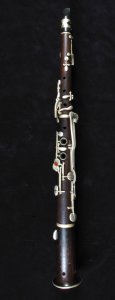
| The innovations are describe by Vencel
József Schunda himself like this: „…. In 1894-96 I reformed the tárogató shawm. The traditional tárogató was blown with a reed like that of the oboe and there were very few stops on it; I applied a mouthpiece similar to that of the clarinet and applied as many keys as to make it easy to play all the chromatic sounds with ease. The instrument itself became larger and bulgier than before. Now it is almost like a combination of three instruments: oboe ,clarinet and bassoon…’’ |
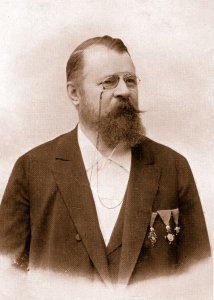 József Vencel Schunda |
However, making the tárogató more perfect and improving the intonation security is attached by the Stowasser company.
There are three major types of the tárogató:
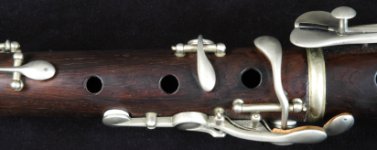
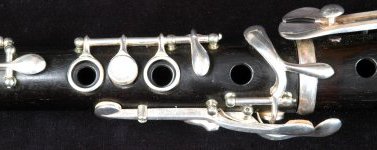
The most wide-spread instruments are pitched B-flat, also there are C, A and
bass tárogató-s. Besides Schunda and Stowasser there were some 4-5 other
companies making tárogató-s at that time.
As from 1895 tárogató-s were made until the end of the 2nd World War, when all
companies were closed down and apart from some experienced individuals (Ferenc
Péczi and János Eisenhoffer) who were able to make new instruments, there were
some others in Transylvania, Temesvár made, but then it all came to an end. In
Germany, Burgau several tárogatós have been made by the Hammerscmidt Instrument
Factory.
New tárogató-s: Currentlynew tárogató-s are made by five individuals/ companies in Hungary, and there are two mouthpiece maker experts. Their references are to be found in the Tárogató maker’section.
